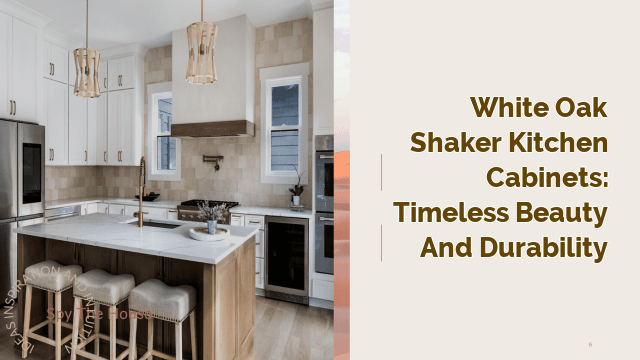Outdoor Kitchen Hood Vent: Everything You Need to Know
Outdoor kitchens have become increasingly popular in recent years, as homeowners seek to expand their living spaces and create a seamless transition between indoor and outdoor areas. And with the rise in outdoor cooking, it’s important to have proper ventilation to ensure a safe and comfortable cooking environment. That’s where outdoor kitchen hood vents come in.
What is an Outdoor Kitchen Hood Vent?
Simply put, an outdoor kitchen hood vent is a ventilation system that removes smoke, heat, and other airborne pollutants from your outdoor cooking space. It typically consists of a hood, which is installed above your cooking area, and a fan or blower, which pulls the air through the hood and out of your outdoor living space.
Outdoor kitchen hood vents can be either ducted or ductless. Ducted vents exhaust the air outside, while ductless vents use filters to clean the air before recirculating it back into your outdoor space.
The Benefits of an Outdoor Kitchen Hood Vent
🔥 Improved Air Quality: Without proper ventilation, smoke, grease, and other pollutants can build up in your outdoor living space and cause health hazards. An outdoor kitchen hood vent helps to remove these pollutants and improve the air quality in your cooking area.
🔥 Increased Comfort: Cooking outdoors can be uncomfortable if there’s no way to remove the heat and smoke that’s generated. An outdoor kitchen hood vent can help to keep your cooking area cooler and more comfortable.
🔥 Protection for Your Outdoor Kitchen: Grease, smoke, and other pollutants can damage your outdoor kitchen equipment and surfaces over time. An outdoor kitchen hood vent helps to reduce the amount of damage that occurs and prolong the life of your outdoor cooking space.
What to Consider When Choosing an Outdoor Kitchen Hood Vent
When choosing an outdoor kitchen hood vent, there are several factors to consider:
Size
The size of your hood vent should be proportional to the size of your cooking area. A hood that’s too small won’t be able to effectively remove all of the smoke and heat generated by your grill or cooktop, while a hood that’s too large will be unnecessarily expensive and may look out of place in your outdoor living space.
Power
The power of your hood vent’s fan or blower is another important consideration. You’ll want to choose a fan that’s powerful enough to properly ventilate your outdoor cooking space, but not so powerful that it creates an excessive amount of noise.
Ducted vs. Ductless
As mentioned earlier, ducted hood vents exhaust the air outside, while ductless vents use filters to clean the air before recirculating it back into your outdoor space. Ducted vents are generally more effective at removing pollutants, but they can be more difficult to install and may require a professional to run the ductwork. Ductless vents are easier to install, but they may not be as effective at removing smoke and heat.
Style
The style of your hood vent is also an important consideration. You’ll want to choose a style that complements the design of your outdoor living space and fits in with your overall aesthetic.
Budget
Finally, you’ll need to consider your budget when choosing an outdoor kitchen hood vent. Hood vents can range in price from a few hundred dollars to several thousand dollars, depending on the size, power, and style.
Outdoor Kitchen Hood Vent Installation
Installing an outdoor kitchen hood vent can be a complex process, and it’s usually best to hire a professional to handle the installation. A professional will be able to ensure that your hood vent is properly sized and installed, and that it meets all local building codes and safety requirements.
Before installing your hood vent, it’s important to make sure that your outdoor cooking area is properly designed and laid out. Your grill or cooktop should be placed in an area where it can be easily accessed and where there’s enough space for you to work comfortably.
You’ll also want to make sure that your hood vent is properly positioned above your cooking area. The hood should be as close to your grill or cooktop as possible without interfering with your cooking, and it should be installed at the proper height to effectively remove smoke and heat.
Maintaining Your Outdoor Kitchen Hood Vent
Maintaining your outdoor kitchen hood vent is important to ensure that it continues to function properly and effectively. Here are a few tips for maintaining your hood vent:
Regular Cleaning
Regular cleaning is essential to keep your hood vent free of grease and other pollutants. You’ll want to clean the hood and filters at least once a month, or more frequently if you use your outdoor kitchen frequently.
Replacing Filters
If you have a ductless hood vent, you’ll need to replace the filters regularly to ensure that they’re effectively removing pollutants from the air. Check your manufacturer’s instructions for recommended filter replacement intervals.
Professional Maintenance
Finally, it’s a good idea to have your outdoor kitchen hood vent professionally maintained at least once a year. A professional can inspect your hood vent and make any necessary repairs or adjustments to ensure that it’s functioning properly.
People Also Ask: Frequently Asked Questions
What is an outdoor kitchen hood vent?
An outdoor kitchen hood vent is a ventilation system that removes smoke, heat, and other airborne pollutants from your outdoor cooking space.
What are the benefits of an outdoor kitchen hood vent?
The benefits of an outdoor kitchen hood vent include improved air quality, increased comfort, and protection for your outdoor kitchen equipment and surfaces.
What should I consider when choosing an outdoor kitchen hood vent?
When choosing an outdoor kitchen hood vent, you should consider the size, power, ducted vs. ductless, style, and budget.
Do I need a professional to install my outdoor kitchen hood vent?
It’s usually best to hire a professional to install your outdoor kitchen hood vent, as it can be a complex process.
How do I maintain my outdoor kitchen hood vent?
You should regularly clean your hood vent and filters, replace filters as necessary, and have your hood vent professionally maintained at least once a year.






